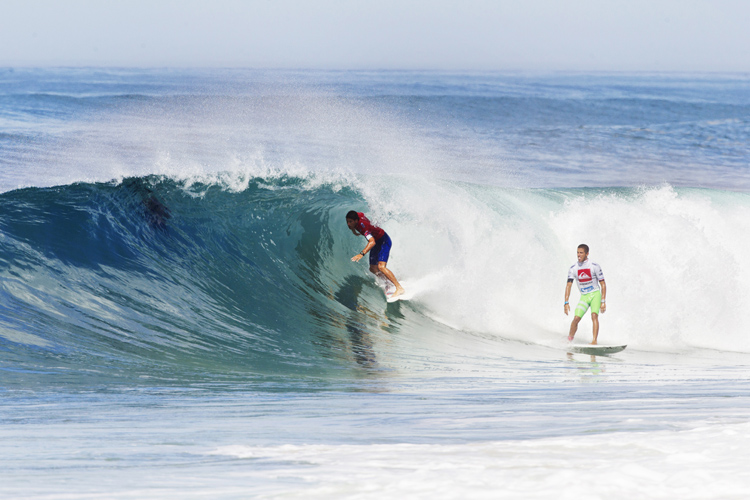Professional surfing has its rules. Just like in any other sport, surfers must know what they can and can't do to beat their opponents and win heats and contests.
Competitive surfing is full of hidden guidelines and directives. Athletes who are new to competitive surfing often make mistakes that cost heats.
In the majority of cases, they are simply too focused on catching waves, and they miss a few basic rules.
One of the worst things that can happen to a pro surfer is to lose a heat due to naive interference despite having the highest two-wave score of his man-on-man clash.
Interferences are the most common mistake made in pro surfing, but we've seen other misinterpretations of the World Surf League (WSL) rulebook.
Let's take a look at the most relevant (and uncommon) rules in pro surfing:
1. Interferences
There are specific right-of-way directives for non-priority situations, snaking, paddling interferences, and two-to-four-man heats.
Possible penalties include leaving the competition area and scoring rides cut in half.
2. Paddling Interference
Forcing the inside surfer to change his line while paddling to catch a wave will result in paddling interference.
3. Priority Rule
As a general rule of thumb, a surfer deemed to have the inside position for a wave has unconditional right of way for the entire duration of that ride.
4. Non-WSL Sanctioned Events
A surfer cannot compete in "unofficial" surf contests without the prior written approval of the World Surf League.
Penalties include fines and the loss of seeding and rating points.
5. Interviews
Failure to attend press conferences and wear the competition jersey provided by WSL during post-heat interviews or the awards presentation might result in fines.
6. End of the Heat
Surfers must return to the beach in a prone position.
A surfer can be penalized at the Head Judges discretion if he/she rides a wave during the next heat.
7. Number of Waves Ridden
In non-priority heats, surfers are only allowed to ride 15 waves.
In heats using a priority system, there is no maximum number of waves a surfer can ride.
8. Water Caddies
Surfers must register their caddy.
If a surfer has elected to have no caddy, then they must return to the beach or boat holding their extra surfboards to make the changeover.
9. Use of Personal Watercraft (PWC)
If a surfer fails to make the inside pick-up point, the PWC can't move up the line-up to get them.
They must wait for the surfer to paddle to the inside pick-up position unless a surfer's safety is at risk.
Additionally, if any surfer with priority uses PWC assistance, he/she automatically loses that priority.
10. Flags and Surfboards
Covering the competition jersey with national flags and towels is not allowed.
Surfers cannot bring surfboards onto any awards presentation stage.
